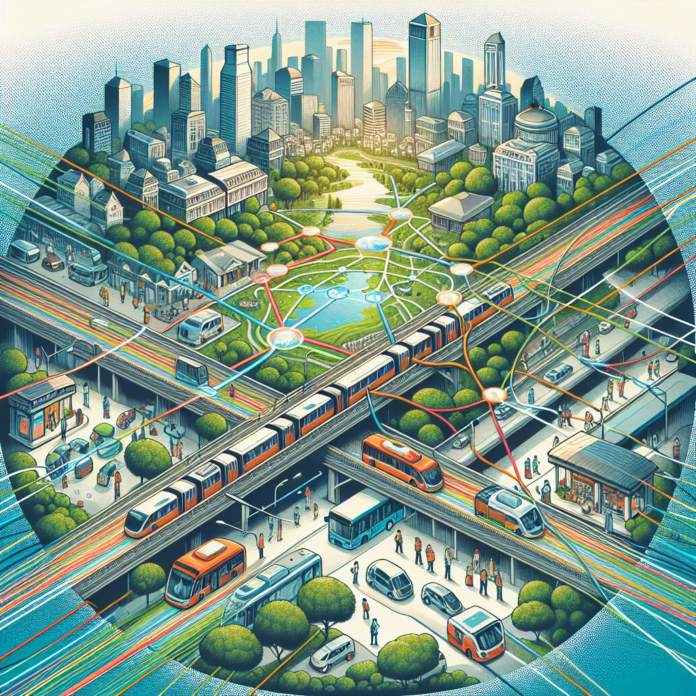Introduction
Public transportation often gets a bad rap. Long waiting times, crowded buses or trains, and limited routes are only a few of the commonly cited issues. While these problems are undeniably true in certain cases, they only show one side of the picture. If we take a broader view of the issue, we can discover a number of hidden benefits of public transportation that aren’t immediately evident. These advantages span across financial, environmental, social and health dimensions and play a pivotal role not only for those who use these services, but for the larger community and the environment as well.
Public Transport and the Economy
At the most basic level, public transport saves money. By taking the bus or subway, individuals can avoid the costs associated with driving such as fuel, tolls, maintenance and parking fees, not to mention the cost of owning a car itself. On a larger scale, employing drivers, conductors, mechanics and other staff contributes to job creation and, thus, to the economy.
Public transport can also be a significant driver of economic growth in cities. By providing affordable access to other parts of the city, it enables people to access job opportunities they would otherwise be unable to reach. Additionally, well-connected public transport systems can attract businesses and facilitate commerce, contributing to the overall economic vitality of urban areas.
Environmental Impact
From an environmental standpoint, using public transport is a more sustainable option. It reduces the number of individual vehicles on the road, resulting in lower carbon emissions. Moreover, many public transport systems are now implementing cleaner technologies, such as electric buses, further reducing their environmental impact.
In reducing the number of cars on the road, public transport can also reduce traffic congestion, leading to smoother traffic flow and less time spent idling in traffic. This not only reduces vehicle emissions, but also the stress and frustration that come with it.
Societal Benefits
Public transportation has the power to foster social inclusion by providing mobility options for all individuals, regardless of economic situation or physical ability. This can help to bridge the social gap between different socioeconomic segments and enable greater participation in community life.
Moreover, public transportation can play a pivotal role in reducing traffic fatalities. According to a study by the American Public Transportation Association, public transit users are much less likely to be involved in a fatal accident than car users.
Health Benefits
Finally, let’s not forget the health benefits. Public transportation encourages walking, contributing to a healthier, more active lifestyle. Research has revealed that people who live in communities with high-quality public transportation tend to have lower rates of obesity and other health problems linked to physical inactivity.
Conclusion
In an era of increasing urbanization and environmental awareness, the benefits of public transportation extend far beyond mere mobility. It saves money, supports the economy, reduces carbon emissions, fosters social inclusion and promotes public health. Hence, it’s crucial to promote the use of public transportation and improve its services for the greater good of the community and the world at large.
FAQs
1. How does public transportation contribute to job creation?
Public transport systems require a wide range of professionals for their operation. These include drivers, conductors, mechanics, station staff, and administrators. In addition, the construction and maintenance of infrastructure such as tracks, stations and vehicles also generate jobs.
2. How does public transportation reduce carbon emissions?
Public transportation reduces the number of private vehicles on the road, thereby reducing the amount of carbon emissions. In addition, many public transport systems are transitioning to cleaner technologies, such as electric or hybrid vehicles, which have a lower carbon footprint than traditional internal combustion engines.
3. How does public transportation foster social inclusion?
Public transportation is generally more affordable than owning and maintaining a private vehicle. This means that it can provide access to mobility for individuals who may not be able to afford their own car. It also enables them to participate more fully in community life and access opportunities that might otherwise be out of reach due to transportation barriers.
4. What is the impact of public transportation on public health?
By promoting walking to and from transit stations, public transportation can contribute to increased physical activity, which in turn is linked to a variety of health benefits including reduced risk of obesity, heart disease, and certain types of cancer. Additionally, by reducing vehicle emissions, public transportation also helps to improve air quality, which can have a positive impact on respiratory health.

